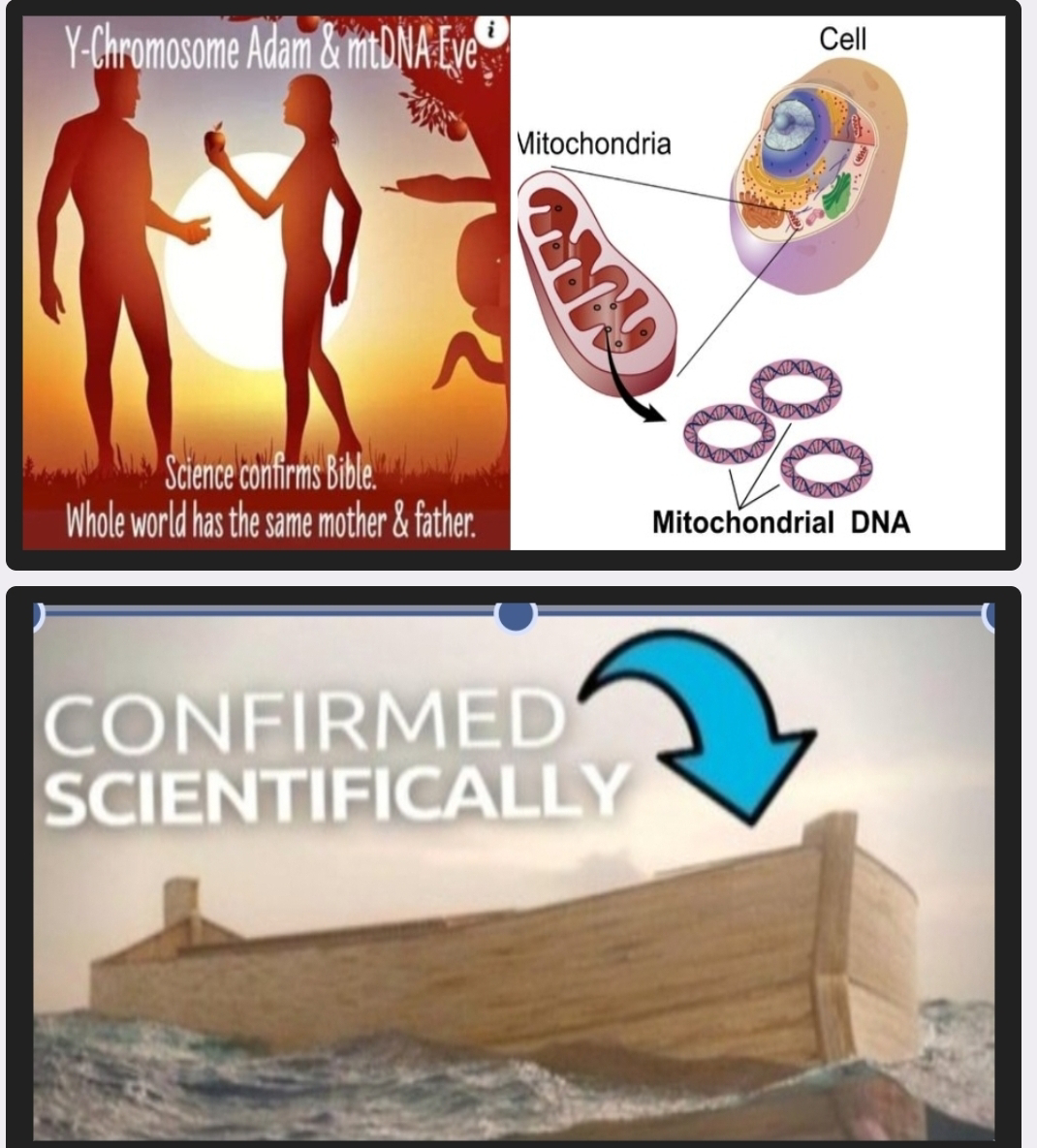All humans and 9 of 10 animals may be descended from an original pair due to a catastrophic event
Why Should Mitochondria Define Species? A Review and Analysis
News summary:
All humans may be descended from an original pair and a catastrophic event almost wiped out ALL species 100,000 years ago,study suggests. Five million mitochondria Genetic 'bar codes' of 100,000 animals and humans from different species were surveyed. Research prompted speculation humans and 9 of 10 animals sprang from single pair. This may have happened after a catastrophic event after the last ice age. Scientists surveyed 5 million genetic 'bar codes' of humans and 100,000 different species and the results have prompted speculation that we sprang from a single pair of adults after a catastrophic event almost wiped out the human race.
Stoeckle and Thaler, the scientists who headed the study, concluded that ninety percent of all animal species alive today come from parents that all began giving birth at roughly the same time, less than 250 thousand years ago - throwing into doubt the patterns of human evolution. These bar codes, or snippets of DNA that reside outside the nuclei of living cells, suggest that it's not just people who could have come from a single pair of beings, but nine out of every 10 animal species, too. 'This conclusion is very surprising,' Thaler admitted, 'and I fought against it as hard as I could.' The conclusions throw up considerable mystery as to why the need for human life to start again was needed such a relatively short time ago.
---
The journal article "Why Should Mitochondria Define Species?" by Stoeckle and Thaler (2018) presents a compelling argument for using mitochondrial DNA (mtDNA) as a primary tool for defining and identifying species. The authors explore the genetic characteristics of mtDNA, its evolutionary patterns, and its practical applications in species delimitation. This paper aims to summarize and analyze the key points of this article, discussing its implications for evolutionary biology and taxonomy.
Key Points
Mitochondrial DNA as a Genetic Marker: The article emphasizes the unique properties of mtDNA that make it a valuable genetic marker. MtDNA is maternally inherited, has a faster mutation rate than nuclear DNA, and lacks recombination. These characteristics facilitate the tracking of evolutionary lineages and the identification of distinct genetic clusters that often correspond to species boundaries.
DNA Barcoding and Species Identification: The authors discuss the concept of DNA barcoding, which involves using a standardized region of mtDNA (typically the cytochrome c oxidase I gene) to identify and differentiate species. This method has proven successful across various animal groups, providing a rapid and cost-effective way to assess biodiversity and monitor ecosystems.
Evolutionary Patterns and Species Delimitation: The article highlights the consistent clustering patterns observed in mtDNA data, with distinct genetic groups often aligning with established species definitions. This congruence suggests that mtDNA can serve as a reliable indicator of species boundaries, particularly in cases where morphological or behavioral traits are ambiguous.
Mitochondrial Diversity and Evolution: Stoeckle and Thaler explore the patterns of mtDNA diversity within and between species. They suggest that mtDNA diversity within a species is often limited due to purifying selection, while neighboring species may exhibit distinct adaptive peaks in their mtDNA sequences. These patterns contribute to the genetic differentiation that defines species boundaries.
Practical Applications and Implications: The authors discuss the practical applications of mtDNA analysis in various fields, including conservation biology, forensic science, and evolutionary research. The ability to rapidly and accurately identify species through DNA barcoding has significant implications for biodiversity assessments, wildlife management, and the detection of illegal trade in endangered species.
Analysis and Implications
The article "Why Should Mitochondria Define Species?" provides a strong rationale for the use of mtDNA as a primary tool for species delimitation. The authors' arguments are supported by extensive empirical evidence and theoretical considerations. However, some potential limitations and criticisms of the mtDNA approach should be considered.
One potential limitation is the reliance on a single gene region (COI) for DNA barcoding. While COI has proven effective in many cases, there are instances where it may not fully capture the genetic diversity within or between species. Using multiple gene regions or whole mitochondrial genomes could provide a more comprehensive picture of species boundaries.
Another potential criticism is that mtDNA may not always reflect the full complexity of species boundaries, particularly in cases of hybridization or introgression. Additional genetic markers, such as nuclear DNA, may be needed to resolve complex evolutionary relationships.
Conclusion
Despite these potential limitations, the article makes a compelling case for the use of mtDNA as a powerful tool for species delimitation. The consistent clustering patterns observed in mtDNA data, coupled with its practical advantages, make it a valuable resource for biodiversity assessment and conservation efforts. The insights provided by this article have the potential to revolutionize our understanding of species boundaries and the evolutionary processes that shape biodiversity.



Comments
Post a Comment